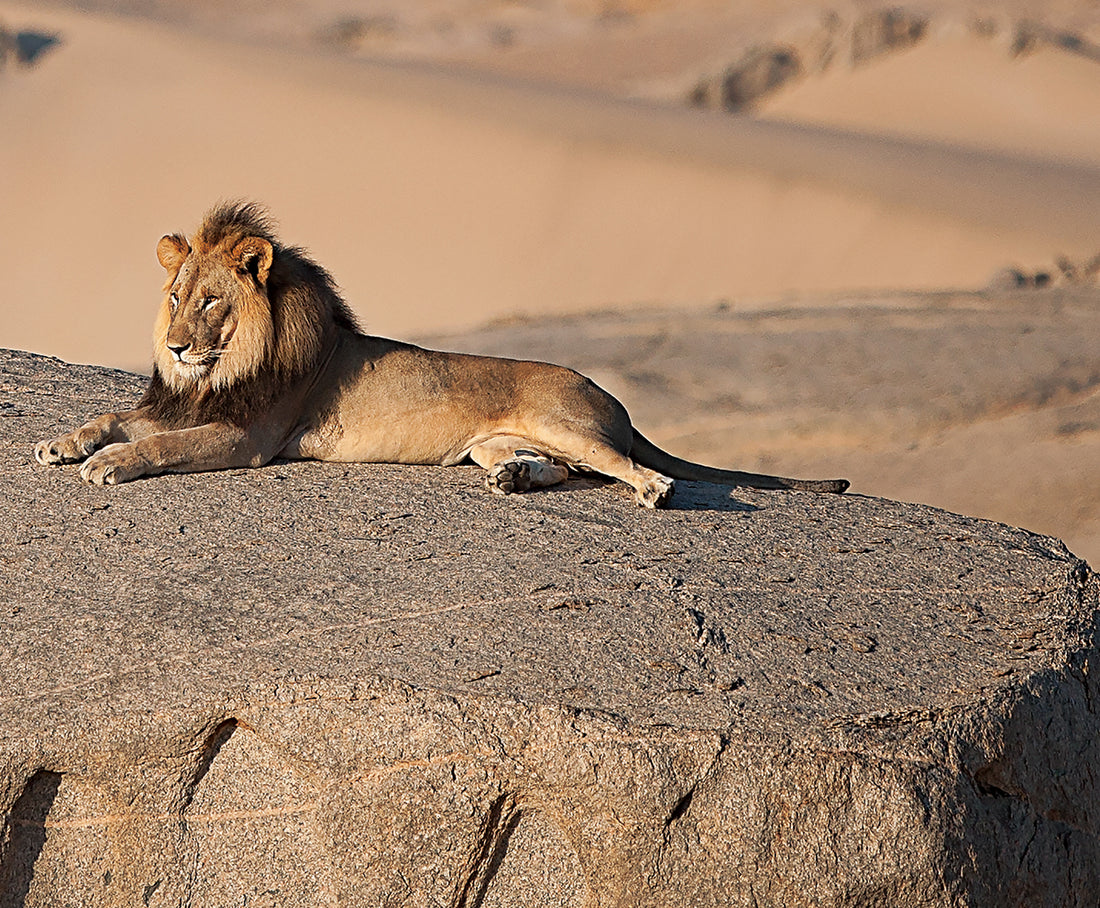
The Ultimate Explorer: The Terrace MaleXpl-68
Share
Swimming to Angola
The Terrace MaleXpl-68 reached the Kunene River at 04h48 on 1 August 2013 and, without any hesitation, he swam across to Angola. One would have thought that the lion would first explore the southern bank of the river before attempting to cross the treacherous waters. Instead, he simply swam across.
Data retrieved from the satellite collar of the male lion, programmed to record GPS positions every hour, revealed how he moved towards the Kunene River. As the male approached the river during the night, he walked at an average speed of 1.7km/h. At 04h48 he was 1.4km south of the river. An hour later the satellite collar recorded a position at the very moment (05:48) that he crossed the Kunene River. The magnitude of this event is significant when considering the volume, depth and speed of the water flowing through the narrow section of 76m. The news of the lion spread and a delegation of local Angolese inhabitants gathered on the north-bank opposite Serra Cafema. Wilderness Safaris kindly sent a boat to collect some of the people and facilitated a meeting with the delegation whom I informed of the lion’s movements.

Above: the Kunene River near Foz do Cunene.
At first, the male lion favoured the northern bank of the Kunene River and explored the 42km section between Hartmann’s Valley and the coast. He reached the lagoon at the mouth of the Kunene River on 7 August 2013 and the Angolan Police at Foz do Cunene were informed of the lion.

Above: the route of the Terrace Male (Xpl-68) crossing the Kunene River.
During several hair-raising attempts to negotiate the enormous dunes that line the Namibian side and getting bogged down, I finally spotted the Terrace MaleXpl-68 for the first and only time in Angola. That night the lion moved towards Foz do Cunene. I fired several pencil-flares from the south bank of the Kunene River in an effort to scare the male lion away from the small settlement. The pencil-flares triggered a chorus of barking from dogs into the night and the Terrace MaleXpl-68 received the message. By sunrise the following morning he had moved 33km along the northern bank of the river towards the east.
During his time in Angola, the male lion made two excursions into the interior of Iona National Park. The first was a 62km trip during the night of 9–10 August 2013 when he moved directly north through barren dunes and gravel plains to a point 24km north of the Kunene River before turning back abruptly. We can only speculate and ponder about what drove the male lion during these peculiar movements. He had barely arrived back at the Kunene River when, on the night of 11 August 2013, he turned around and embarked on his second trip into the interior. This excursion took him much deeper into the Iona National Park. During a three-day trip of 165km, the male lion travelled through mountains, plains and an endless sea of sand as he made a wide circuit opposite the island of Baia dos Tigres, 68km north of the Kunene, before arriving back on 14 August 2013.
The crossing of the Kunene River by the Terrace MaleXpl-68 was of concern for two reasons: the force of the fast-flowing river, and the large numbers of crocodiles along the banks. The Terrace MaleXpl-68 was a remarkable lion that knew how to survive in the hyper-arid section of the Namib Desert, but he did not have any experience or knowledge of perennial rivers and crocodiles.

Above: a Nile crocodile on the banks of the Kunene River.
This is an excerpt from Vanishing Kings Lions of the Namib Desert by Philip Stander with Will & Lianne Steenkamp.

